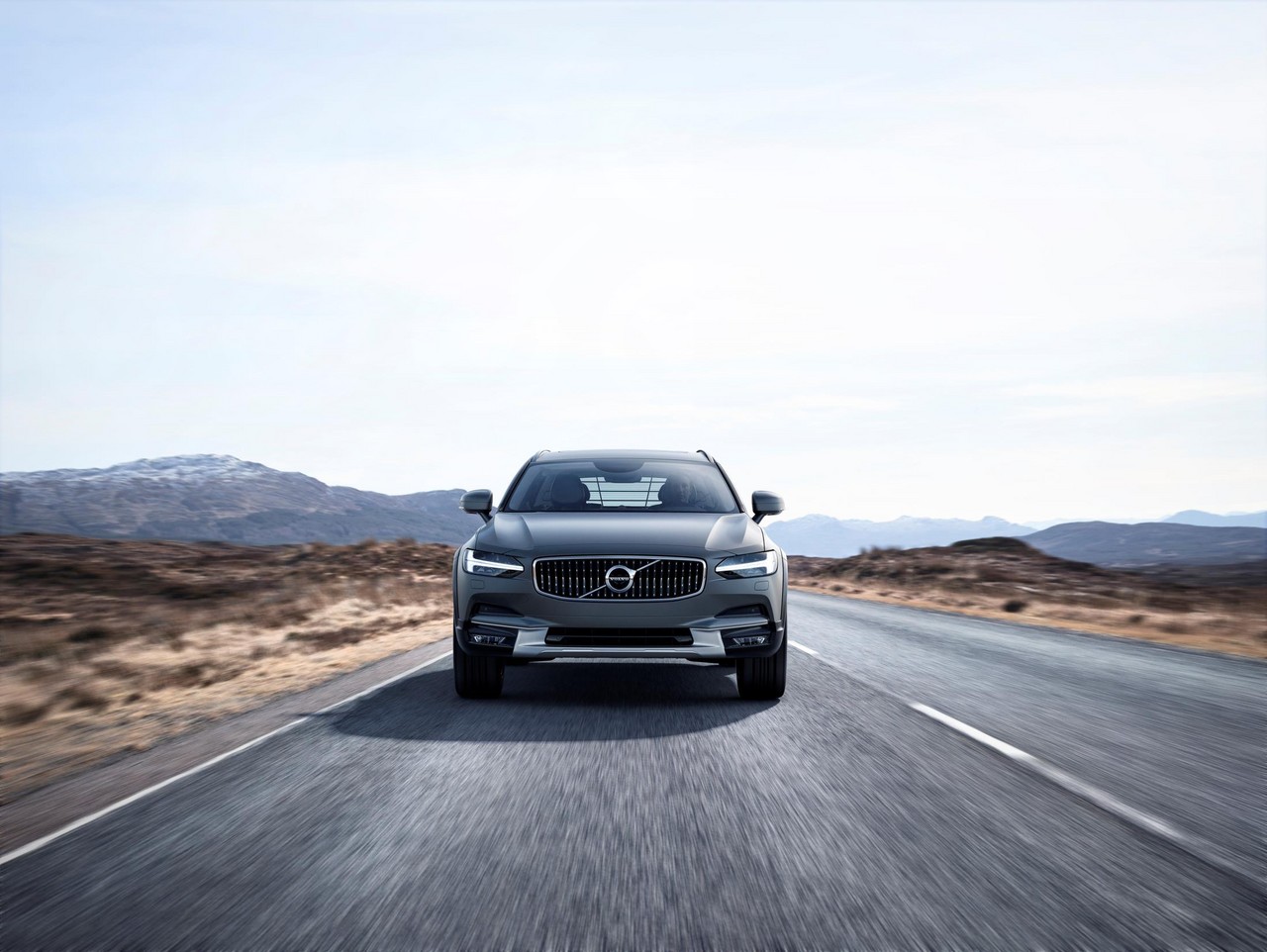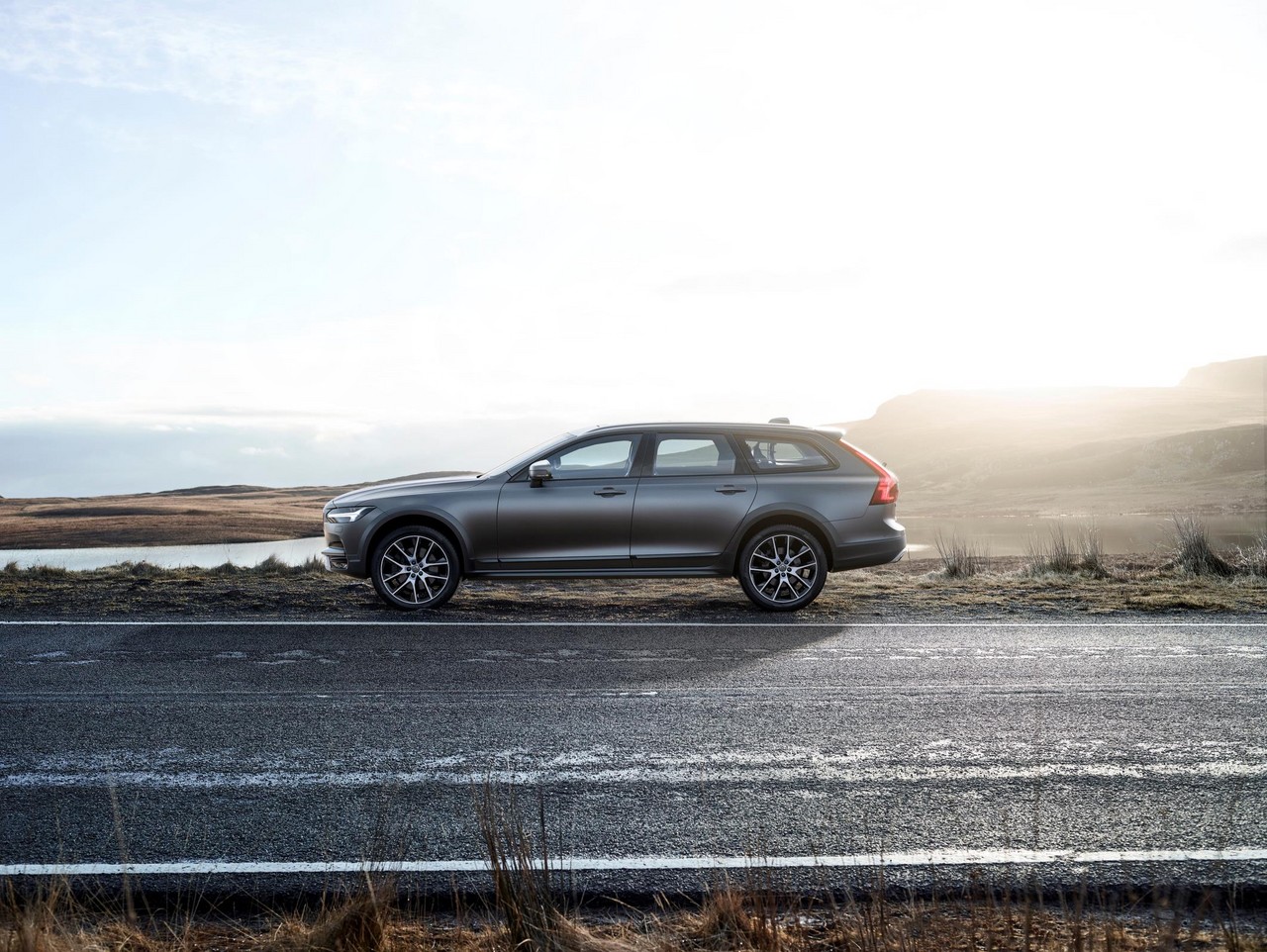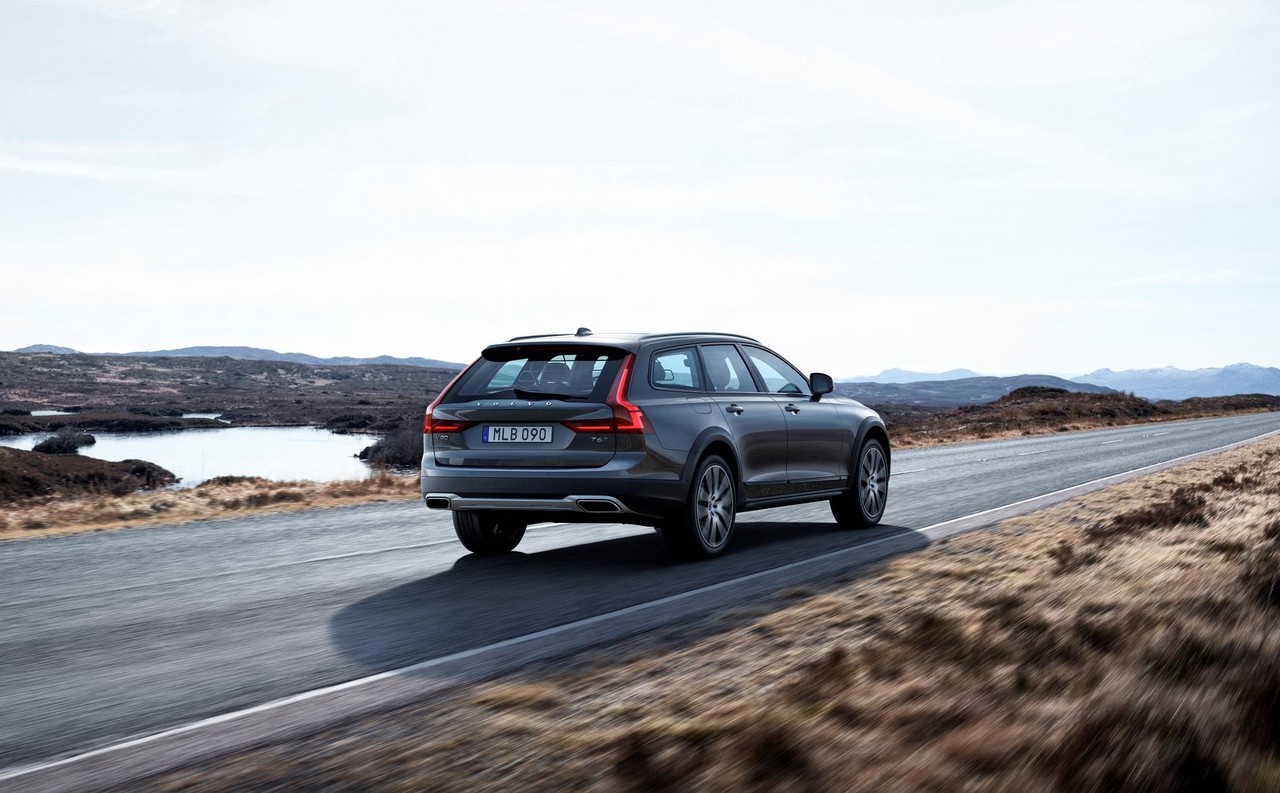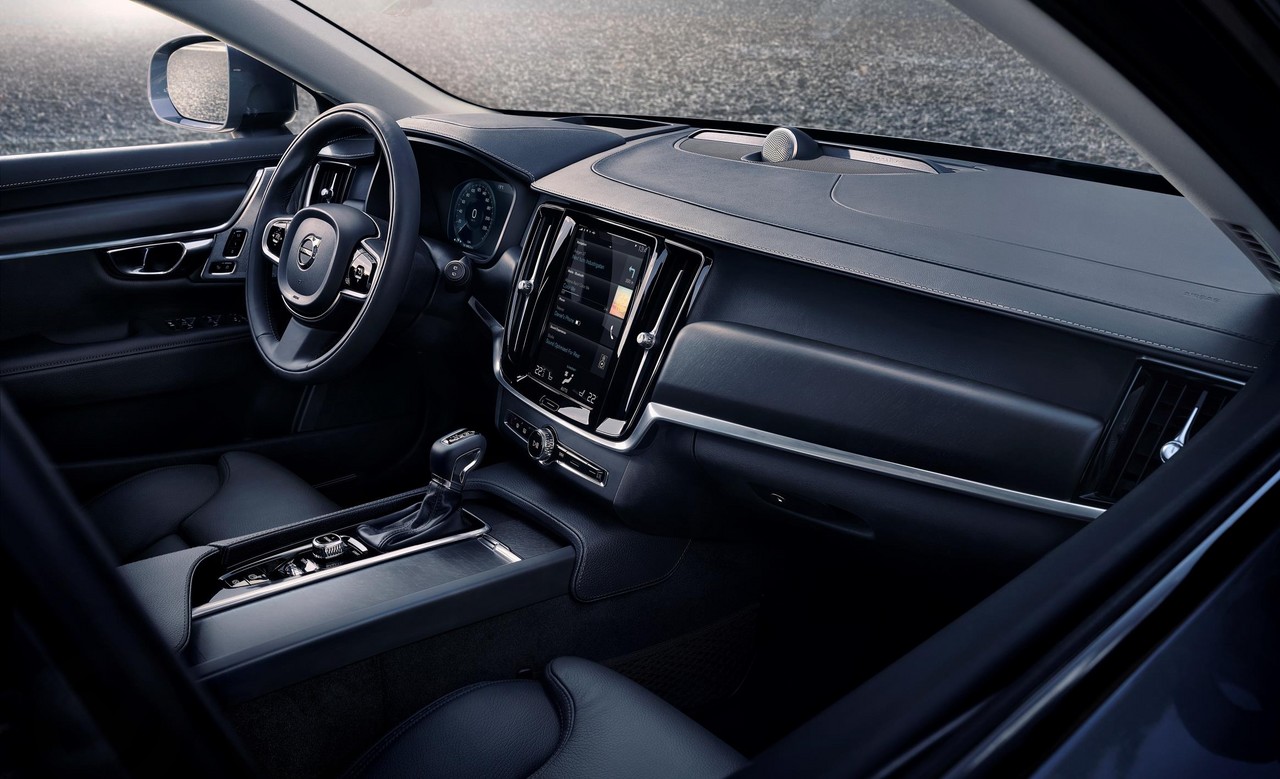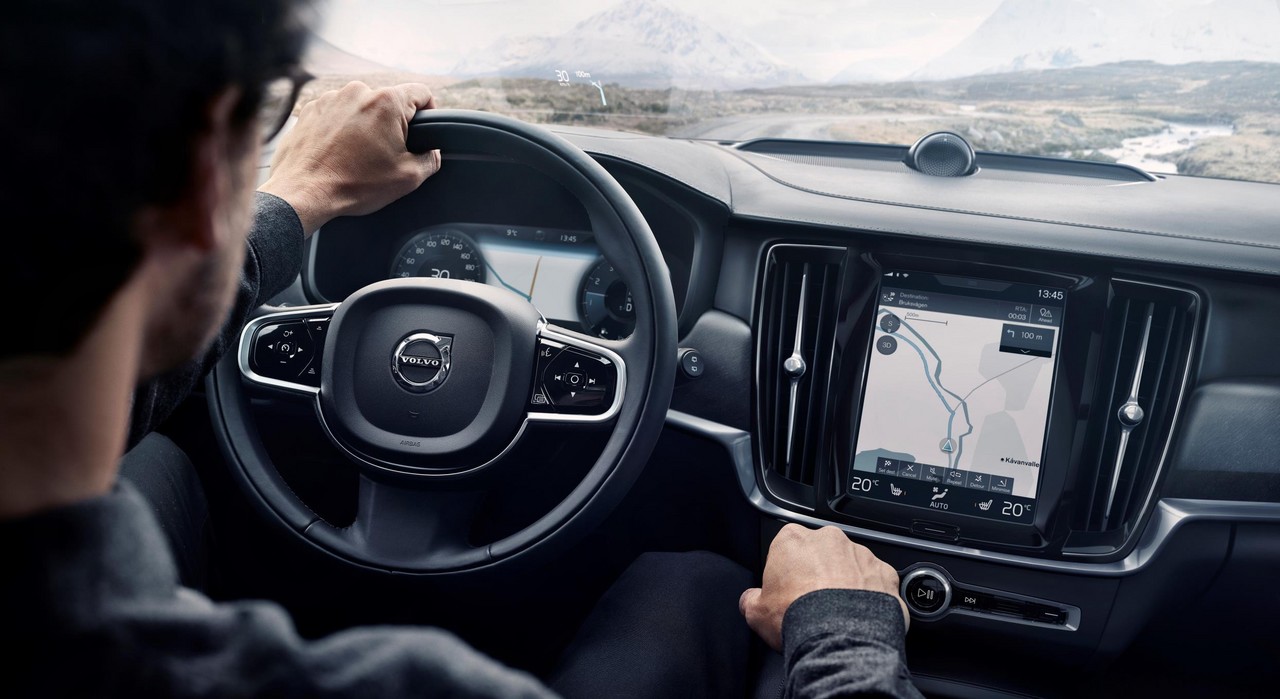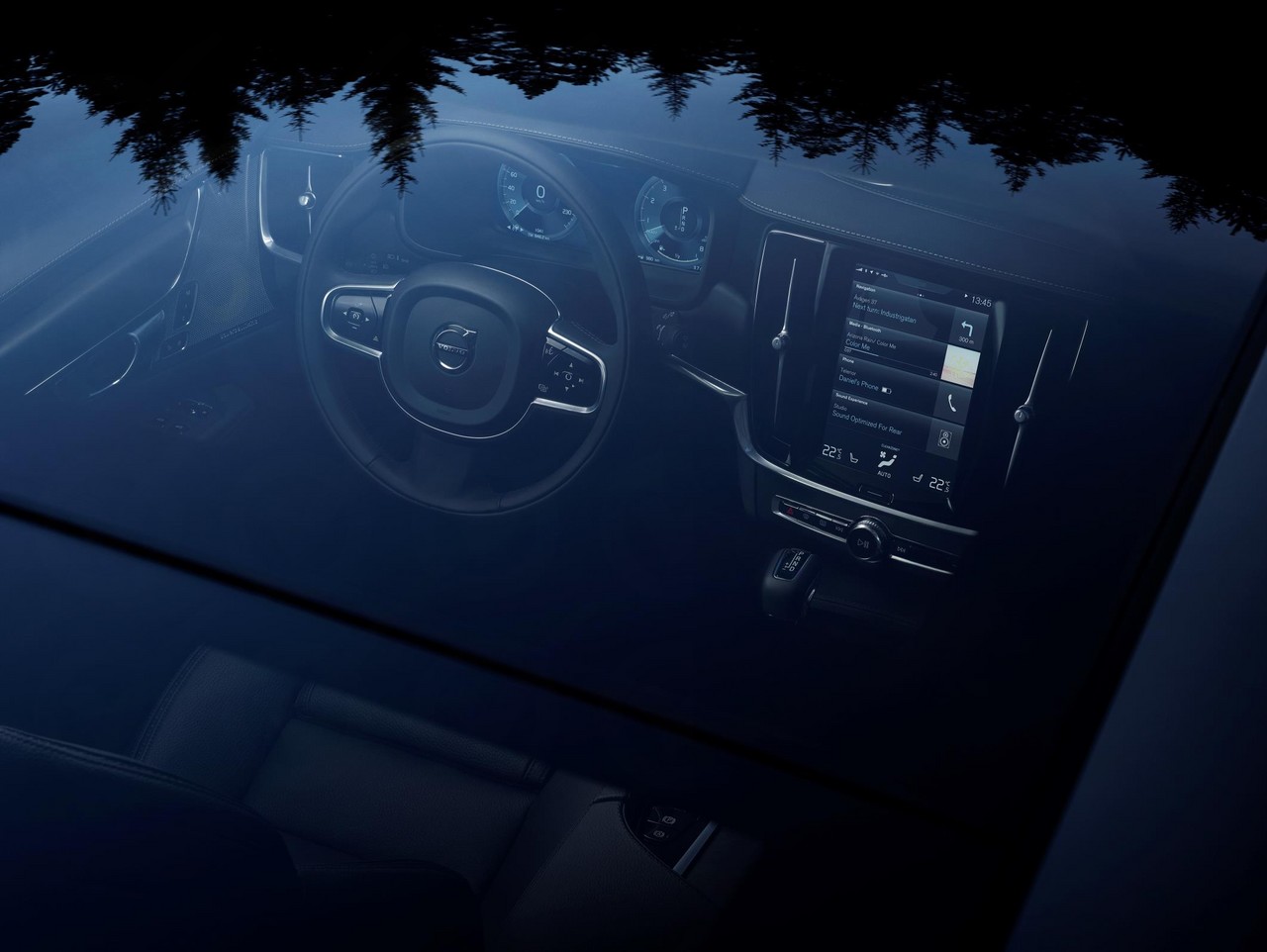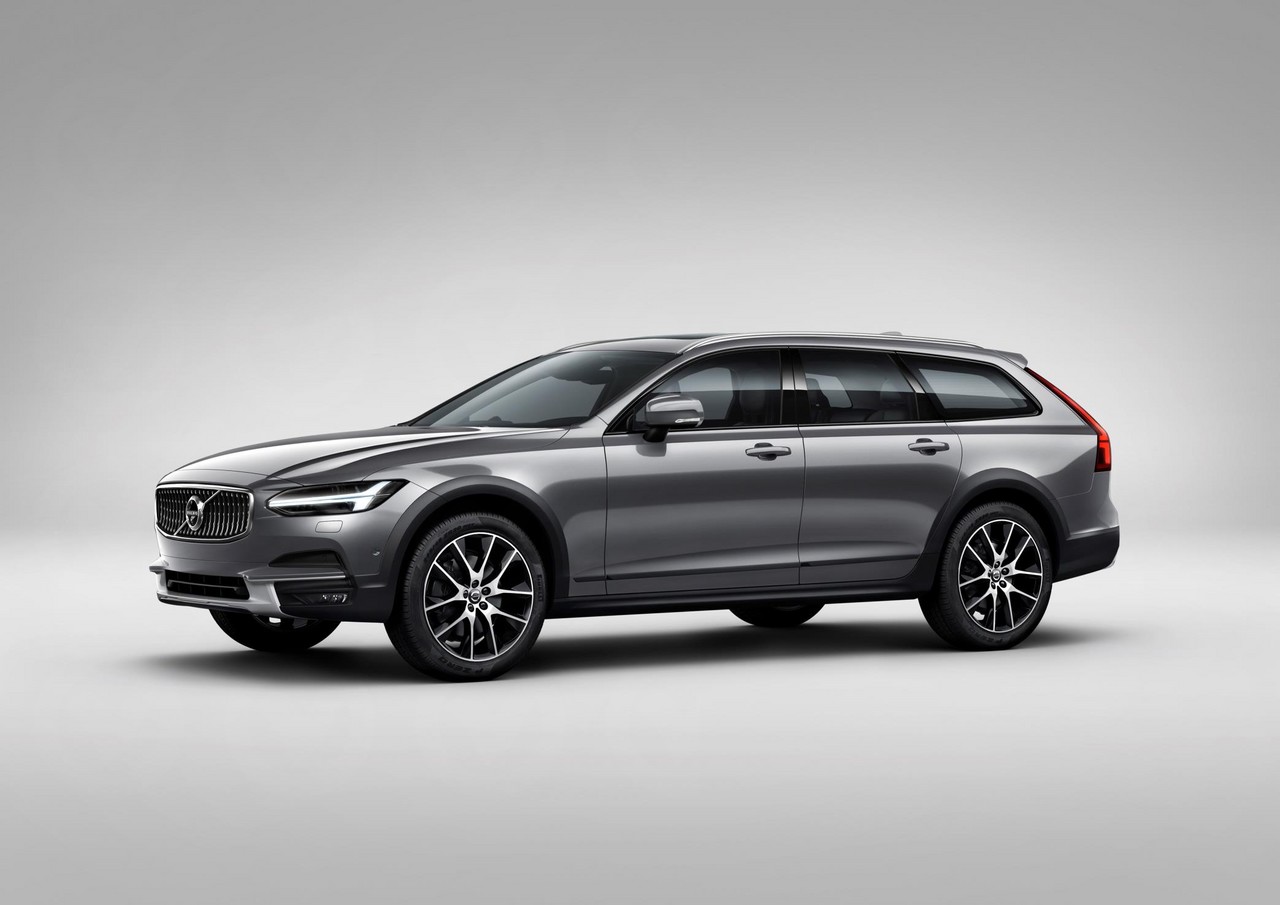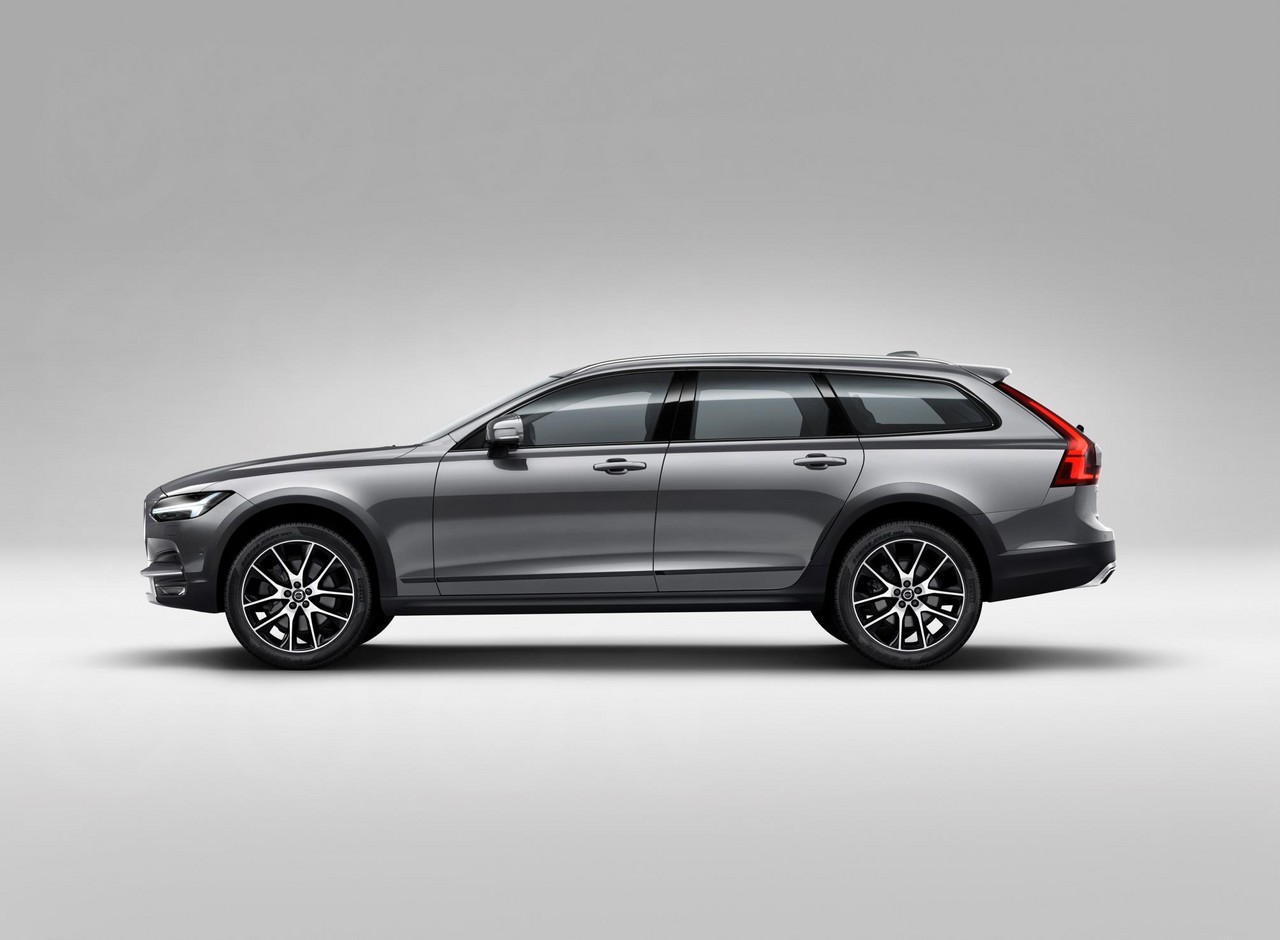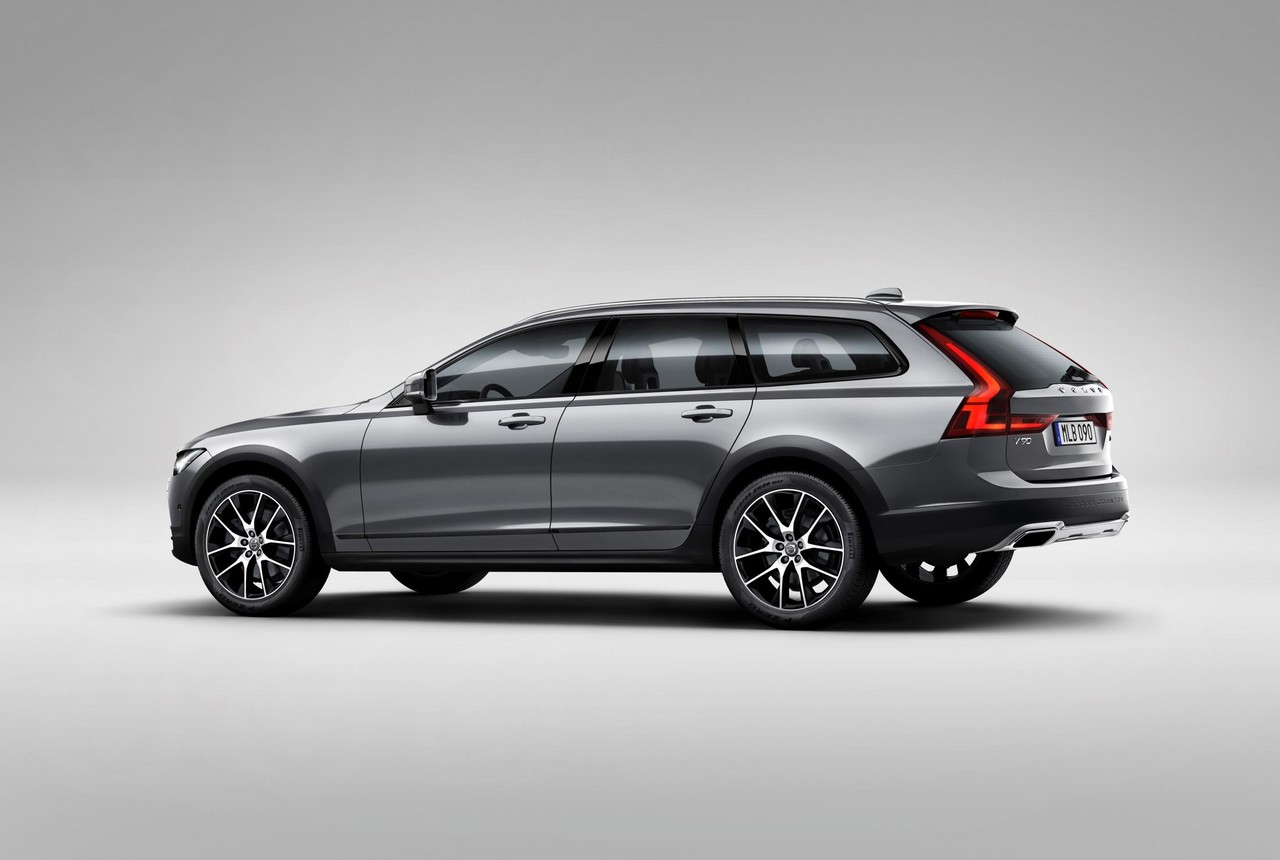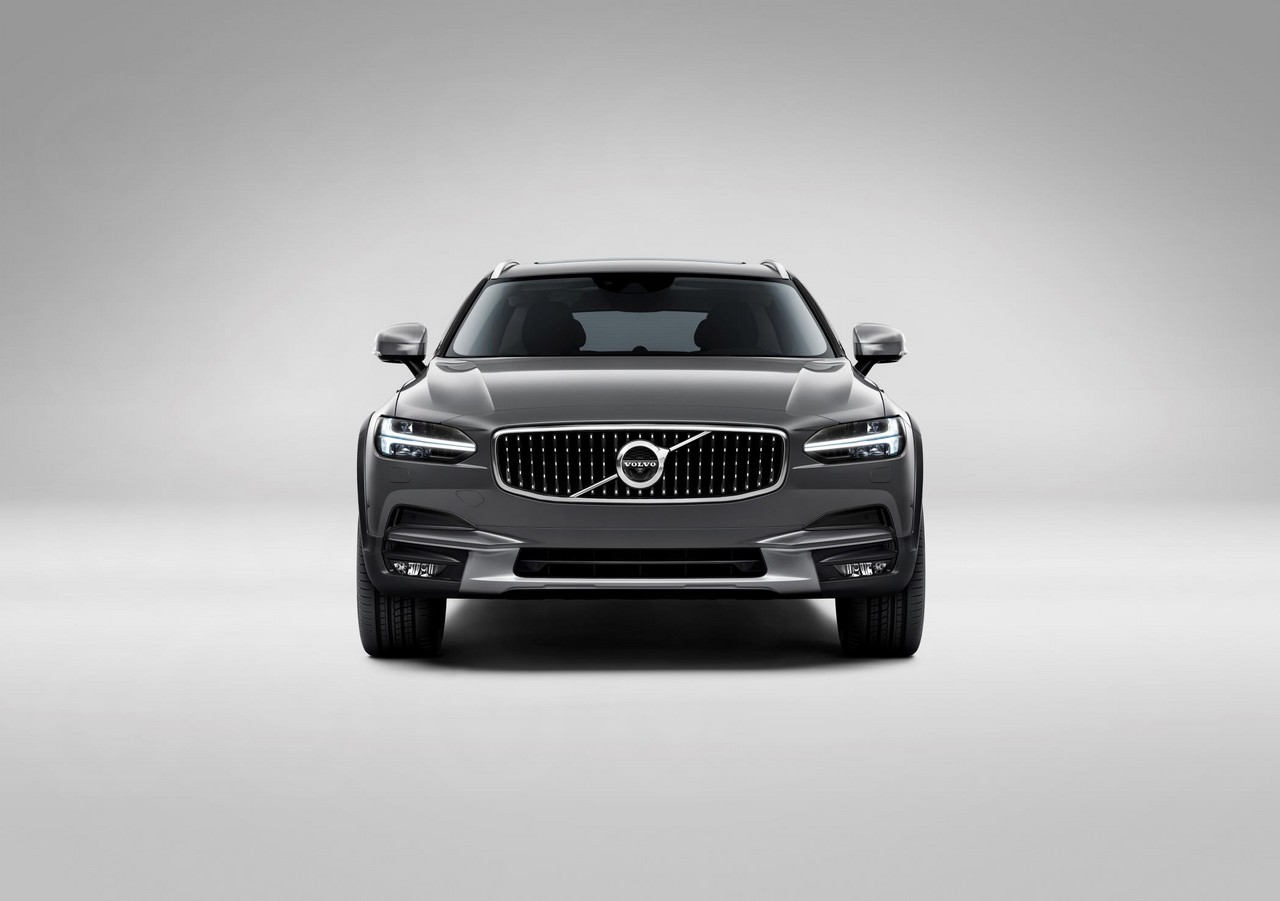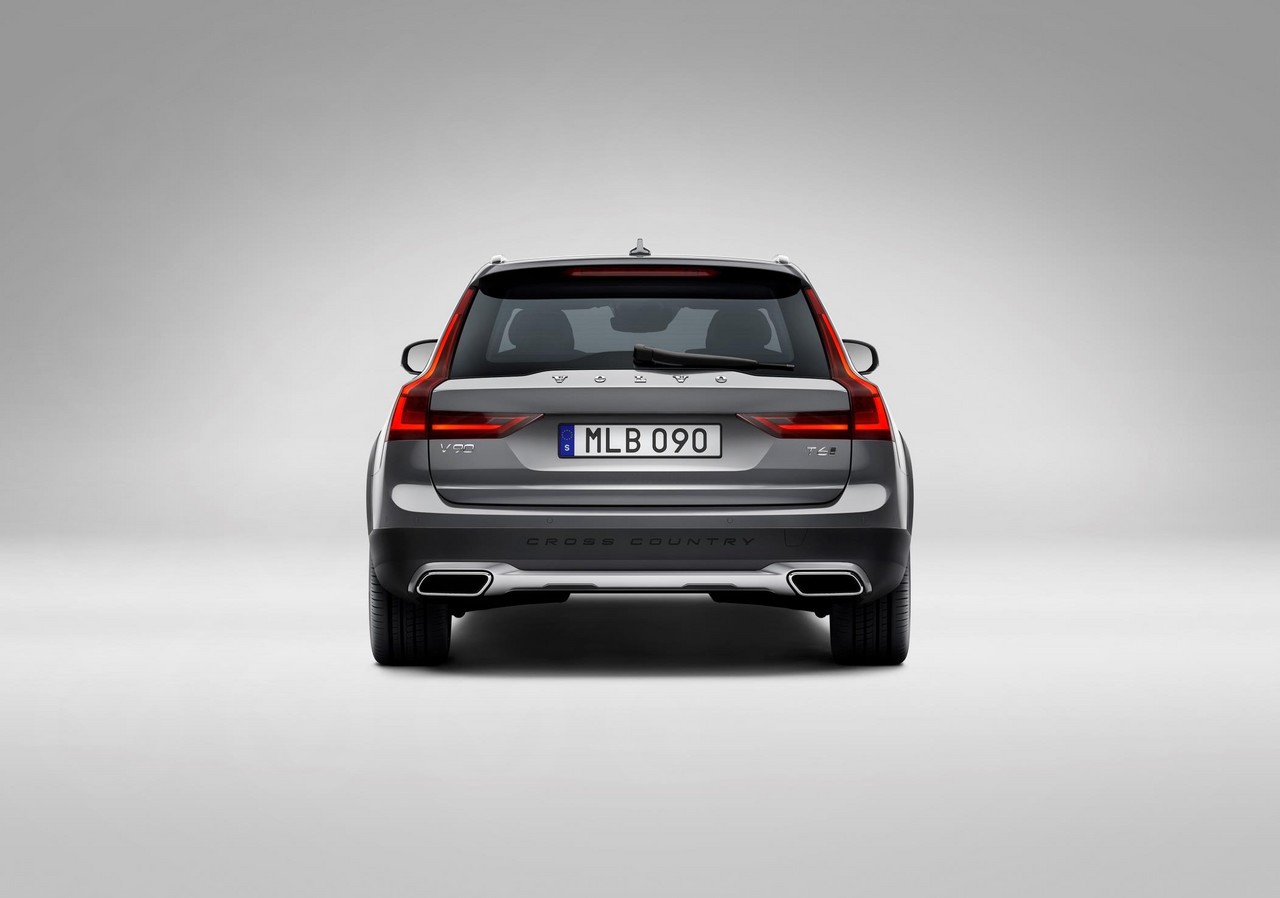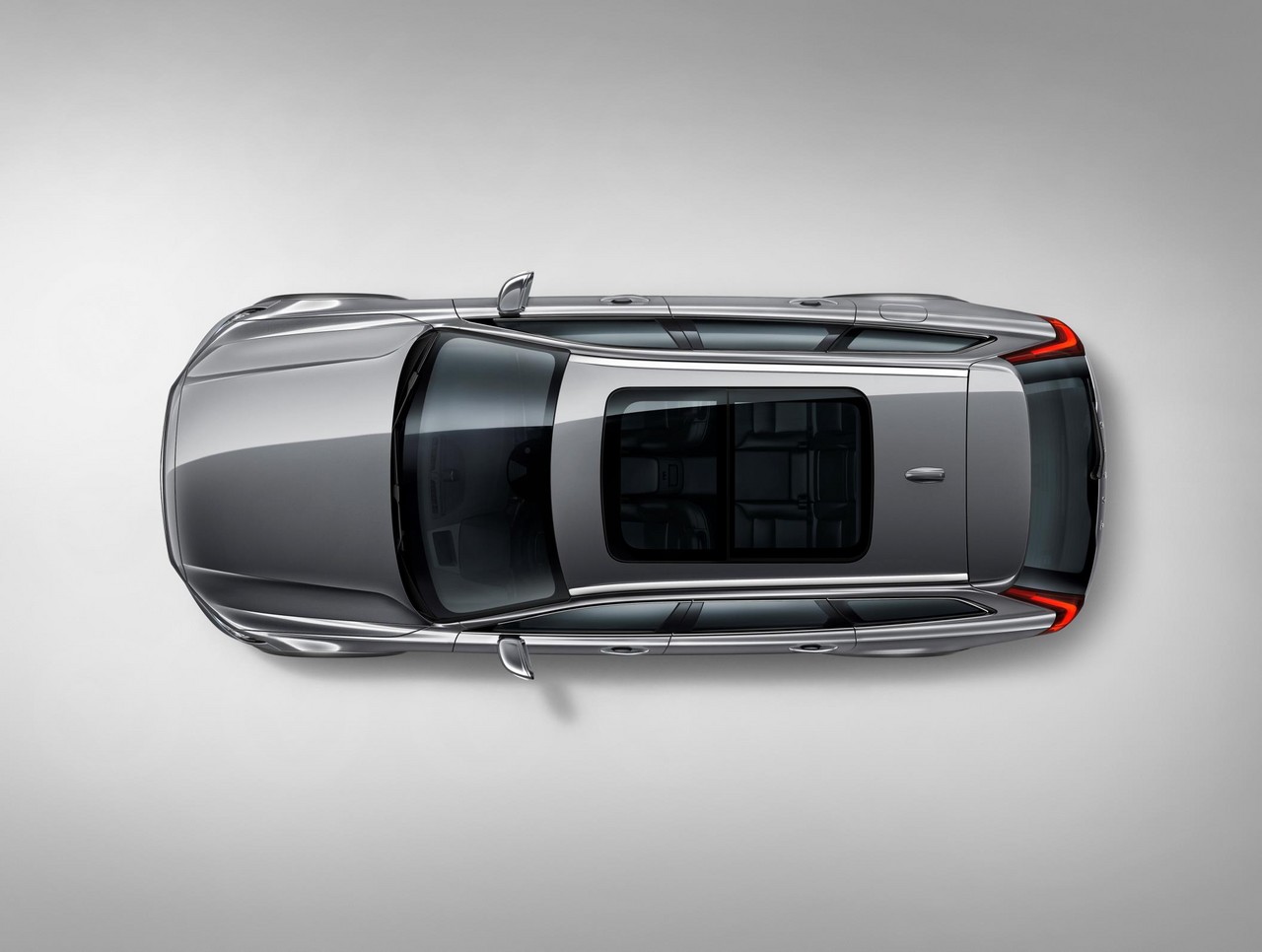
- Supportive front seats
- Comfortable ride with excellent low-speed compliance
- Refined eight-speed Aisin Warner automatic transmission
- Predictable, stable handling
- Volvo’s ‘City Safety’ fitted a standard and five star safety rating
- Inconsistently weighted steering lacks precision
- Infotainment menus not intuitive to use
- At idle, D5 engine is noisier than rivals
- Tyre roar on coarse surfaces
Overview
To be released in Australia in the second quarter of 2017, the Volvo V90 Cross Country is a large executive wagon. Manufactured in Torslanda, Sweden, it is understood that the Volvo V90 Cross Country range will consist solely of a D5 Inscription model for Australia. The V90 Cross Country D5 is powered by a 2.0-litre biturbo diesel engine which is mated to an eight-speed automatic transmission.
Volvo V90 Cross Country D5: D4204T23 diesel engine
For the Volvo V90 Cross Country D5, the 2.0-litre D4204T23 diesel engine has an aluminium block and head, double overhead camshafts, four valves per cylinder, a serial sequential two-stage turbo system with one variable nozzle turbine, common-rail direct injection (at pressure of up to 2500 bar) and compression ratio of 15.8:1. To reduce fuel consumption, the D4204T23 engine has a stop/start function which enables it to shut down the V90 Cross Country is stationary in traffic.
The D4204T3 diesel engine also has a ‘PowerPulse’ function which is designed to provide instant turbocharger response by drawing air from the air filter via a compressor to a pressurised, two-litre air tank. When the driver attempts to accelerate quickly during launch or low-speed driving, the air is fed by a valve into the exhaust manifold to feed the turbocharger for a responsive ‘pulse’ of power. Furthermore, the air tank is automatically re-filled.
| Variant | Engine | Trans. | Peak power | Peak torque |
|---|---|---|---|---|
| D5 | 1969 cc D4204T23 two-stage turbo diesel (VNT) | 8sp auto | 173 kW at 4000 rpm | 480 Nm at 1750-2250 rpm |
Haldex all-wheel drive (AWD) system
The Volvo V90 Cross Country has a fifth-generation Haldex all-wheel drive system which consists an electronically controlled and hydraulically actuated multi-plate clutch coupling (located in front of the rear axle differential at the end of the prop shaft). Under low loads or when coasting, the rear axle is decoupled to reduce fuel consumption. If, however, there is a loss of front wheel traction or such a loss is anticipated by on-board sensors, then an electrohydraulic oil pump applies pressure to the clutch plates to transfer up to 50 per cent of the engine’s torque to the rear wheels (for a 50:50 front:rear torque split).
Body and dimensions
The Volvo V90 Cross Country is underpinned by Volvo’s ‘Scalable Product Architecture’ (SPA) which is shared with the post-2016 Volvo S90 , Volvo Mk.2 XC90 and Volvo Mk.2 XC60 . For the V90 and S90, 35 per cent of total body weight is hot-formed steel.
Compared to the Volvo S90, the Volvo V90 Cross Country is 24 mm shorter (at 4939 mm), 11 mm narrower (1879 mm) and 100 mm taller (at 1543 mm), though wheelbase length (2941 mm) is unchanged.
Suspension and steering
The Volvo V90 Cross Country has double wishbone front suspension and an integral (multi-link) rear axle with composite leaf springs; both the front and rear suspension have hydraulic shock absorbers and a stabiliser bar, while air suspension will be optional for the rear.
The Volvo V90 Cross Country has rack-and-pinion steering with speed-sensitive, electric power assistance; the steering wheel requires 2.9 turns from lock-to-lock, while the V90 Cross Country has a turning circle of 11.6 metres.
Safety equipment
Standard safety equipment for the Volvo V90 Cross Country includes dual front airbags, a driver’s knee airbag, front side airbags, full-length curtain airbags, ABS, electronic brake force distribution, brake assist, electronic stability control, traction control and seatbelts with pre-tensioners for all seats.
For the V90 Cross Country, Volvo’s ‘City Safety’ system is fitted as standard and active at speeds above 4 km/h. City Safety includes collision avoidance or mitigation with –
- Other vehicles: for vehicles in front of the Volvo V90 Cross Country, the driver receives a warning followed by autonomous braking if the driver does not brake or steer to avoid the vehicle ahead. At speed differences up to 50 km/h between the V90 Cross Country and the vehicle ahead, the collision can be avoided even if the driver does not react. At higher speed differences, however, the autonomous braking of the V90 Cross Country reduces the severity of the collision. If a collision is imminent and the V90 Cross Country is travelling above 30 km/h, the front seatbelts are tightened;
- Cyclists: if a cyclist swerves into, crosses or is stationary in the path of the Volvo V90 Cross Country, City Safety warns the driver and initiates autonomous braking if the driver does not;
Oncoming vehicles in intersections: if the driver turns in front of an oncoming vehicle, City Safety can assist by braking autonomously if the driver fails to do so. If a collision is imminent and the V90 Cross Country is travelling above 10 km/h, the front seatbelts are tightened; - Pedestrians: if a pedestrian moves into, crosses or is stationary in the path of the Volvo V90 Cross Country, the driver is warned and the brakes are applied autonomously if the driver fails to do so (at speeds up to 70 km/h). A collision with a pedestrian can be avoided at speeds of up to 45 km/h; and,
- Large animals: for the V90 Cross Country, the radar/camera unit can detect large animals – such as moose, elk and deer – that are either on the road or about to cross it. The driver receives an initial warning and, when braking, additional brake pressure may be provided to support avoidance if needed. If the driver does not respond, the brakes are applied autonomously. According to Volvo, autonomous braking when large animals are detected can result in vehicle speed being reduced by 15 km/h. If a collision is imminent and the V90 Cross Country is travelling at speeds above 30 km/h, the front seatbelts are tightened.
Other active safety technologies – fitted as standard – for the V90 Cross Country include:
- Adaptive Cruise Control (ACC): when cruise control is active, ACC can automatically reduce vehicle speed if a vehicle is detected ahead and accelerate back up to the cruising speed when the road ahead is clear;
- Blind Spot Information System (BLIS): uses rear radar sensors to detect vehicles approaching the rear of the XC60 from seventy (70) metres away and alert drivers to their presence;
- Cross Traffic Alert (CTA): uses the rear radar sensors and alerts the driver to crossing traffic – up to 30 metres from the sides of the vehicle – when reversing out of a parking space;
- Rear Collision Mitigation: uses a rearward facing radar to detect if a rear impact is imminent and, if so, tightens the seatbelts to protect occupants and flashes the brake lights to warn the following driver;
- Lane Departure Warning: uses a forward-facing camera to monitor lane markings when driving at speeds above 65 km/h. If the driver unintentionally drifts out of their lane, the system provides gentle steering wheel torque to steer the vehicle back onto its intended course. If the vehicle departs from its lane, a warning issued via haptic vibration of the steering wheel;
- Run-off Road Mitigation: designed to prevent unintentional road departure at vehicle speeds between 65 and 140 km/h. When an accidental run off road situation is considered imminent, torque is applied to the steering to assist the driver, along with braking action if needed. The system can be over-ridden by the intervention of the driver;
- Run-off Road Protection: when a run off road scenario is detected, the front safety belts are tightened to keep the occupants in position. To prevent spinal injuries, Volvo developed an energy-absorbing function between the seat and seat frame which deforms mechanically to cushion the vertical forces that can occur when a car encounters a hard landing; and,
- Driver Alert Control: monitors driver behaviour for signs of fatigue and, if detected, provides a warning tone and displays a message encouraging the driver to take a break.
Pilot Assist: semi-autonomous drive
As standard, the Volvo V90 Cross Country is equipped with Volvo’s ‘Pilot Assist’ assists with acceleration, braking and steering functions to help the driver follow the traffic flow within their lane. According to Volvo, this assistance reduces driver strain and increases safety margins by enhancing distance keeping and positioning within the lane. For the Volvo V90 Cross Country, the second generation Pilot Assist system provides steering assistance at speeds up to 130 km/h and does not need a vehicle ahead to follow where road markings are clearly defined.
The Pilot Assist system is limited in the extent of acceleration, braking and steering force it can apply. As such, the driver remains responsible for the operation of the vehicle of Pilot Assist is active and Pilot Assist is automatically switched off if the driver does not keep their hand on the steering wheel. The driver can over-ride Pilot Assist at any time by using the brake pedal, accelerator pedal or steering wheel. Furthermore, using the lane change indicator turns off steering support. Pilot Assist is activated by the driver using the steering wheel buttons on the left side of the wheel.
Euro NCAP testing
In Euro NCAP testing , the 2017 Volvo S90 D4 received a five star safety rating, including a 95 per cent adult occupant protection rating and an 80 per cent child occupant protection rating, and this rating was also applied to the Volvo V90 . In the frontal offset test, protection of the front occupants was generally rated as good, though lower leg protection was rated as adequate (i.e. a slight risk of serious injury). Maximum points were awarded in the side impact test; in the more severe pole test, however, chest protection was rated as adequate.
Brakes
The Volvo V90 Cross Country D5 has 345 mm by 30 mm ventilated front brake discs and 320 mm by 20 mm ventilated rear discs.
Features: Volvo V90 Cross Country D5 Inscription
For Australia, standard features for the Volvo V90 Cross Country D5 Inscription include 8.5J x 19-inch black diamond cut alloy wheels with 255/40 R19 tyres, a Sensus High Performance Audio system with ten speakers, HDD music storage, 3.5 mm auxiliary and USB inputs, Bluetooth mobile phone connectivity and audio streaming, voice recognition, a satellite navigation system, four-zone climate control air conditioning, Fine Nappa leather upholstery, power adjustable front seats, cruise control (with speed limiter), directional LED headlights with Active High Beam (AHB) and washers, LED fog lights, automatic headlights, rain-sensing wipers, front and rear parking sensors, a leather wrapped steering wheel, remote central locking with proximity key (i.e. keyless entry), power adjustable and heated door mirrors with folding function, power windows, a height and reach adjustable steering wheel, driver memory settings (for the seat and door mirrors), push-button start, auto-dimming interior and exterior mirrors, illuminated vanity mirrors, a 12 volt power socket, tyre pressure monitoring, a 12.3-inch digital instrument display, door handle illumination and puddle lights, ‘Black Walnut Decor’ interior inlays, a trip computer and an immobiliser.
As standard, the Volvo V90 Cross Country is equipped with Volvo’s ‘Park Assist Pilot’ which could provide autonomous steering for parallel and perpendicular parking manoeuvres.
Specifications and brochure
- Specifications: Volvo V90 Cross Country (February 2017)
- Brochure: Volvo V90 Cross Country (March 2017)
